Lost revenue from flow measurement errors often goes unnoticed until audits reveal shocking losses. Ultrasonic technology provides the financial visibility needed for small pipe systems.
Ultrasonic flow meters deliver 4 key economic benefits in small pipes: 1) 3-8% energy savings from zero pressure drop, 2) 99.5% uptime from no moving parts, 3) ±0.5% accuracy reducing product loss, and 4) 50% lower lifetime costs versus mechanical meters. Their non-intrusive design avoids production shutdowns during installation/maintenance.
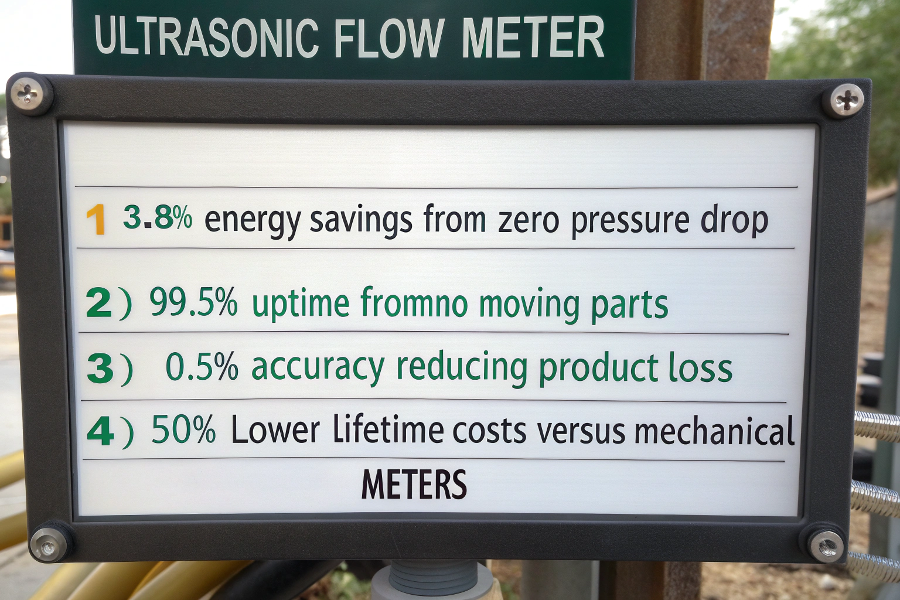
Economic Benefits Breakdown
While the upfront cost seems higher, the total cost of ownership tells a different story. Let’s examine the real financial impact.
What Are the Benefits of Ultrasonic Flow Meter?
Six financial advantages transform small pipe operations:
Cost Savings Comparison (DN25 Pipe Example)
| Cost Factor | Mechanical Meter | Ultrasonic Meter | Annual Savings |
|---|---|---|---|
| Energy Loss | $2,400 | $0 | $2,400 |
| Calibration | $800 | $300 | $500 |
| Maintenance | $1,200 | $100 | $1,100 |
| Downtime | $3,500 | $200 | $3,300 |
| Total Savings | $7,300 |
Hidden Value Drivers
- Leak Detection – 2-5% flow loss prevention
- Process Optimization – 1-3% yield improvement
- Data Accessibility – Remote monitoring savings
- Longer Lifespan – 15 vs. 7 year replacement
- Regulatory Compliance – Avoided penalties
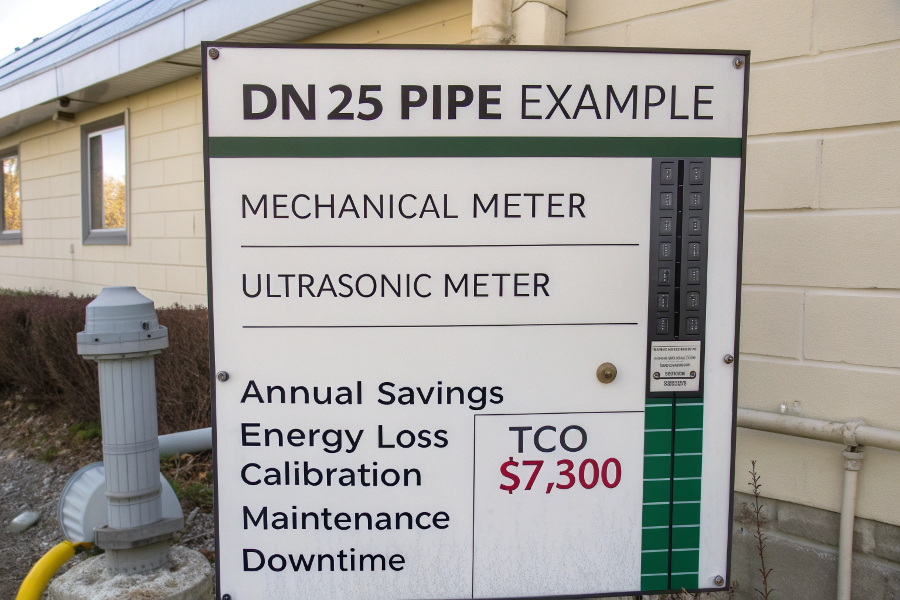
5-Year Cost Analysis
Application-Specific Savings
- Chemical Injection: 5-15% material cost reduction
- HVAC Systems: 8-12% pump energy savings
- Water Treatment: 3-5% lower chemical usage
- Food Production: 2-4% less product giveaway
- Pharmaceuticals: Meets FDA audit requirements
Why Is Flow Measurement Important in Industries?
Precision flow data impacts every business metric:
Financial Impact Areas
| Industry | Measurement Value | Typical Savings |
|---|---|---|
| Oil & Gas | Custody transfer accuracy | $250k/year |
| Chemical | Batch process control | 1-3% yield |
| Power | Heat rate optimization | $80k/MW-year |
| Water | NRW (Non-Revenue Water) reduction | 5-15% volume |
| Food | Ingredient costing | $50k/line |
Small Pipe Critical Applications
- Additive Dosing – ±1% error = $100k in chemicals
- Coolant Flow – 5% drop = $25k equipment failure
- Lubrication Systems – Low flow = $50k bearing damage
- Sampling Lines – Inaccuracy voids $1M tests
- Purge Gas – Wrong flow = $10k sensor loss
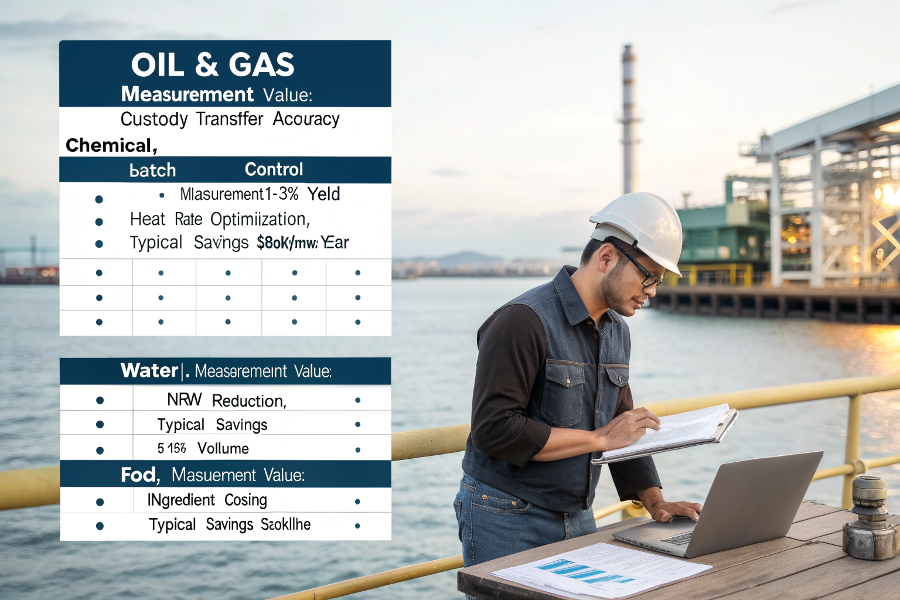
Cross-Industry Benefits
Regulatory Drivers
- ISO 50001 energy audits
- EPA effluent monitoring
- FDA 21 CFR Part 11
- Safety instrumented systems
- Trade measurement laws
Which Flow Device Is Suitable for Measuring Large Pipes?
Contrasting small vs. large pipe solutions:
Technology Comparison
| Parameter | Small Pipes (<DN50) | Large Pipes (>DN300) |
|---|---|---|
| Best Technology | Ultrasonic | Electromagnetic |
| Installation | Clamp-on saves cost | Full-bore necessary |
| Accuracy | ±0.5-1% | ±0.2-0.5% |
| Cost Factor | $1,500-5,000 | $15,000-50,000 |
| Lifetime | 15+ years | 20+ years |
When Ultrasonic Works in Large Pipes
- Water/wastewater (clean)
- HVAC systems
- Non-conductive fluids
- Temporary measurements
- Retrofit situations
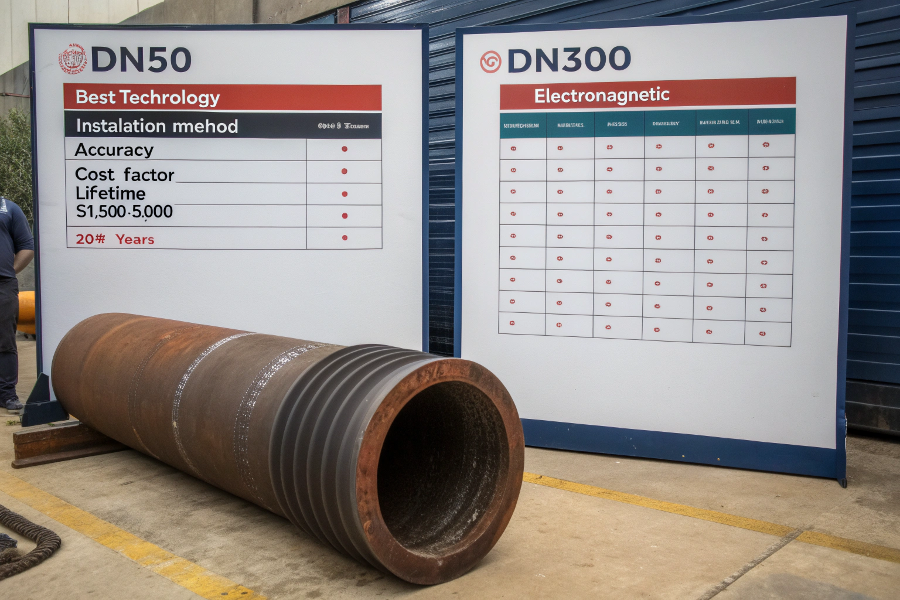
Scale Adaptation
Large Pipe Alternatives
- Electromagnetic – Best for conductive fluids
- Insertion Vortex – Economical for steam
- Annubar – Low-cost differential pressure
- Insertion Thermal – For gas applications
- Woltmann – High-volume water
What Are the Limitations of Ultrasonic Flow Meter?
Understanding small pipe constraints:
Performance Boundaries in Small Pipes
| Limitation | Small Pipe Impact | Mitigation Strategy |
|---|---|---|
| Minimum Velocity | 0.3 m/s | Select low-flow models |
| Air Entrainment | >0.5% voids | Install deaeration tanks |
| Pipe Material | Metal/plastic | Use special transducers |
| Laminar Flow | Re<4,000 | Add flow conditioners |
| Temperature Range | -40°C to 200°C | Select high-temp versions |
Economic Constraints
- Higher initial cost ($2k vs. $500 mechanical)
- Special training required
- Need for periodic verification
- Limited rental market
- Fewer repair options
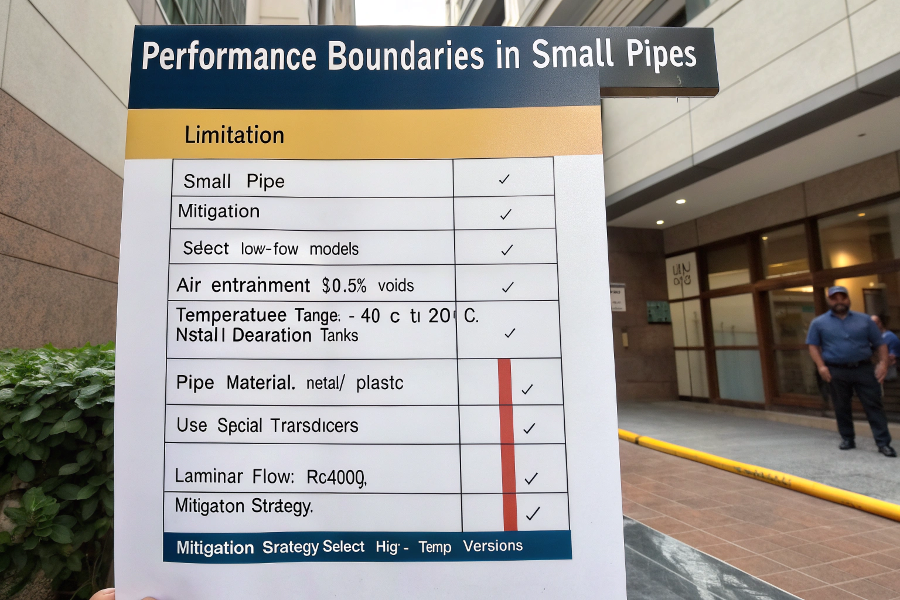
Technical Tradeoffs
When Not to Choose Ultrasonic
- Slurries >5% solids
- Coating fluids
- Non-homogeneous mixtures
- Rapidly changing flows
- Pipes with heavy insulation
Conclusion
Ultrasonic flow meters deliver measurable economic benefits for small pipe systems, typically paying for themselves within 6-18 months through energy savings, reduced maintenance, and improved process control. While presenting some technical limitations, their financial advantages over mechanical alternatives make them the preferred choice for DN10-DN50 pipelines in most industries. Proper selection and installation ensures these benefits are fully realized while avoiding potential measurement pitfalls.
